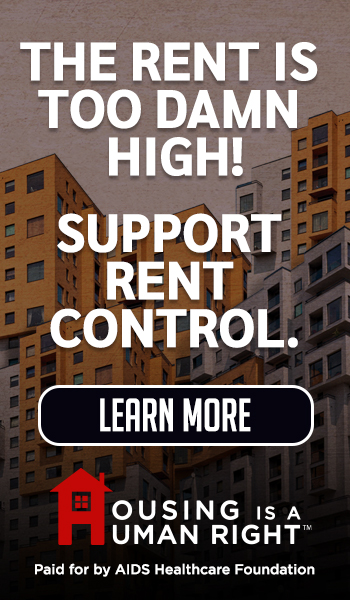Comments
iAUDIT! - As a public sector auditor, I heard time and again was the old saying that “Liars figure and figures lie”. It expressed a widely held belief that numbers can be manipulated so they say whatever you want them to say. If that were true, I would have been out of a job 30 years ago. Numbers are immutable, as constant as gravity and just as unforgiving. Two plus two is always four no matter how many times we’re told its five or three. You can try to bend them, cook them, ignore them, or spin them, but numbers do not change. This fact is especially important in Los Angeles’ homelessness environment, where numbers fly around like bees on a warm spring day. We’re told 23,000 people have been sheltered or housed, and that “thousands” more were housed in 2024 than in previous years. Officials tell us unsheltered homelessness has decreased five percent (or maybe 10 percent depending on the source). We’re told the numbers prove the multi-billion dollar business of homelessness interventions is having an effect. But can we trust the numbers? Where do they come from and what are they based on? Questioning the numbers is especially relevant as the City and County move away from funding LAHSA as the primary conduit of providing services to LA’s unhoused population.
Let’s start with the most important number: the number of homeless people in LA County. LAHSA’s 2024 Point in Time (PIT) count was 75,312 homeless people, of whom 51,365 (69.5 percent) were unsheltered. Both numbers were down from the previous year (.27 percent for overall homelessness and 5.1 percent for unsheltered homelessness). Leaders like Mayor Bass and LAHSA’s then-CEO Va Lecia Adams Kellum were quick to claim victory, saying the numbers were finally going down after years of increases. The problem was the numbers were based on deeply flawed methods. As detailed by Christopher LeGras, who participated in the count, in the All Aspect report, the count process was plagued by software glitches and missed areas. In addition, the count is founded on a set of assumptions, like a certain number of people in a tent or RV, which are assumed to be correct but have not been verified. To make things even more confusing, LAHSA’s volunteer count teams were told not to count some areas like PCH and Will Rogers State Park because other entities would do it. But when Sue Pascoe at Circling the News asked for the data from those counts, she received no response. Despite those problems, and a lack of substantive answers, LAHSA once again claimed the 2025 count showed a reduction in unsheltered homelessness of between five and ten percent, based on “raw data”. However, the initial count did not include youths, nor people in parks or near state highways. Once could speculate the early release of raw data was intended to counter negative publicity following two damning audits and the revelation Dr. Adams Kellum was approving contracts for a nonprofit where her husband is a senior manager.
So how many people live on LA’s streets? We’ll never know an exact number because the homeless population is by its nature transient, often moving from place to place. Many people live in a cycle of chronic housing insecurity, slipping in and out of homelessness. Limited-scope counts in selected areas in the City performed by the RAND Corporation indicate homelessness is much higher than LAHSA’s PIT counts suggest. Some advocates believe the real number of the unhoused could be twice as high as the official numbers. A September 2024 study sponsored by the Economic Roundtable estimated the real number of the homeless population at 139,000. While a precise estimate may be impossible, undercounting the homeless population means the programs meant to reduce homelessness are even more inadequate than we believe.
How many people have those programs actually served, and what are the outcomes? This is where numbers are truly important, because they tell us how our money is being spent. This is also the point where agencies desperately try to turn negative data into evidence of success. There is no better example than the Mayor’s December 9 press release bragging about thousands more people sheltered and housed than in previous years. That release was prepared with the knowledge LAHSA and the City have been double or triple counting people in shelters for years. A 2019 audit from City Controller Ron Galperin found LAHSA overcounted the number of people served because: 1) LAHSA aggregated numbers from all people served in Greater Los Angeles (not just the city), and served by other agencies like the VA, HACLA, and other nongovernmental providers. 2) The figure counted people who were placed in shelters, fell back into homelessness, and then were recounted as unique individuals if they were rehoused after more than one month. Therefore, it is possible one person can be counted as many as six times in one year. Since the 2019 report, little has changed. The recent court-ordered assessment from audit firm Alvarez & Marsal reported examples where people can be counted multiple times at several points in the system. Because they have not been held accountable, neither the providers, nor LAHSA, nor the City have felt compelled to improve their reporting systems. Other audits from the City Controller have shown that LAHSA isn’t properly tracking shelter bed occupancy. An audit released the day after the Mayor’s specious press release showed, despite the Mayor’s claim more people than ever were being sheltered and housed, shelter capacity never exceeded 78 percent for the five years covered by the study, and transfers to permanent housing didn’t exceed 20 percent of shelter occupants.
In fact, any supposed reduction in homelessness could very well be a consequence of deaths from fentanyl overdose and other causes. In a March 29, 2024, LA Time article, RAND Corporation economist Jason Ward said it was altogether possible the high rate of mortality among homeless people could lead to a decrease in the unhoused population. Sure enough, a few months later, Mayor Bass and Dr. Adams Kellum were bragging about a slight reduction in homelessness. Although the County Department of Health claimed deaths in 2023 had “plateaued”, it still increased by about two percent, and overdoses were responsible for 45 percent of those deaths. Deaths from heart failure, which is often associated with heavy long-term drug use, claimed another 14 percent. Decreasing the homeless population by allowing people to die on the streets harkens to far more barbaric times than the 21st century.
To put it as bluntly and clearly as possible, LA’s homelessness system is broken. Providers and the agencies that are supposed to oversee them have no real idea how many unhoused people are stranded on our streets, how many are placed in shelters, how many are housed, and they don’t know how long they stay housed. What’s worse is that our elected officials and senior agency managers know the system is broken, and they refuse to fix it.
If you want proof about how egos and personal philosophy infect effective program management, look no further than the mayor’s proposed budget. The numbers from the City Controller’s dashboard tell us it can cost more than $406,000 to house one person through the mayor’s signature Inside Safe program. The dashboard also tells us the number of people who fell back into homelessness exceeded the number housed by 33 percent. Only about 22 percent of those “served” (however that is defined) by Inside Safe have been housed, a low performance rate similar to other, less expensive, programs. Some Council members and even the mayor herself have said Inside Safe’s $350 million annual costs cannot be sustained long-term. Yet her proposed fiscal year 2025-26 budget calls for fully funding Inside Safe, even as she plans reductions for services that benefit the general population and may eliminate more than 1,600 filled positions.
As Councilmember Rodriguez said in an LA Times article, “Speeches are great, but budget details are better. I think we’ll know what the priorities of this mayor are when we look at the budget details, and whether or not this is going to be a city that upholds the interests of all Angelenos, or just a select few.” The proposed budget gives us the answer. Mayor Bass would rather fund her pet (and ineffective) program than avoid draconian reductions in programs benefiting all the city’s residents.
When Mayor Bass, or other officials from LAHSA or the County claim their homelessness programs are working, remember they are using numbers with no basis in fact. We don’t know how many unhoused people are on our streets. We don’t know how many receive services, how many are sheltered, or how many are housed or stay housed. What we do know is that at least seven people die on our streets every night, and local leaders seem unbothered by that number.
(Tim Campbell is a resident of Westchester who spent a career in the public service and managed a municipal performance audit program. He focuses on outcomes instead of process in his iAUDIT! column for CityWatchLA.)














